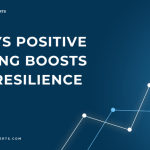Table of Contents
- What is Mindfulness?
- The Benefits of Mindfulness
- 1. Breathing Exercises
- 2. Body Scan Meditation
- 3. Mindful Walking
- 4. Mindful Eating
- 5. Gratitude Journaling
- 6. Guided Meditations
- 7. Mindfulness Apps
- 8. Nature Immersion
- 9. Mindfulness in Daily Activities
- 10. Join a Mindfulness Group
- FAQs about Mindfulness
- Conclusion
What is Mindfulness?
Mindfulness is the practice of being fully present and engaged in the moment, aware of your thoughts, feelings, and surroundings without judgment. Originating from ancient Buddhist traditions, mindfulness has gained widespread acceptance in modern psychology and wellness communities. It encourages us to focus on the ‘now’ rather than being preoccupied with the past or future, which can lead to reduced stress, improved emotional regulation, and a greater appreciation of life.
“Mindfulness is not about clearing your mind but about being aware of what is happening in your mind.”
The Benefits of Mindfulness
Engaging in mindfulness practices can yield numerous benefits, including:
- Stress Reduction: Mindfulness can lower cortisol levels, helping you manage stress more effectively. For more on stress management, see 10 proven stress management techniques for daily relief.
- Improved Focus: Regular practice enhances concentration and cognitive flexibility.
- Emotional Well-being: It promotes an increased sense of happiness and emotional resilience, aligning with techniques discussed in 10 ways positive thinking boosts emotional well-being.
- Better Physical Health: Mindfulness can lead to lower blood pressure, improved sleep quality, and a stronger immune system, as noted in 10 ways positive thinking boosts physical health.
“Mindfulness is the bridge between our thoughts and our actions.”
1. Breathing Exercises
Breathing exercises are a fundamental aspect of mindfulness. They can help you center your thoughts and calm your mind. Start by finding a quiet space, closing your eyes, and focusing on your breath. Inhale deeply through your nose for a count of four, hold for a count of four, and exhale through your mouth for a count of six. Repeat this for five minutes.
| Step | Action | Duration |
|---|---|---|
| 1 | Inhale through the nose | 4 seconds |
| 2 | Hold your breath | 4 seconds |
| 3 | Exhale through the mouth | 6 seconds |
“Breath is the anchor that keeps us in the present.”
2. Body Scan Meditation
The body scan meditation involves bringing awareness to different parts of your body, promoting relaxation and connection. Lie down comfortably and start at your toes, gradually moving up to your head. Focus on each part, noticing sensations, tension, or relaxation. This practice can be done for 10 to 30 minutes, helping to cultivate a deeper connection with your body.
“Your body is a living history of your experiences; listen to it.”
3. Mindful Walking
Mindful walking turns a simple activity into a meditative practice. As you walk, focus entirely on the sensation of your feet touching the ground, the rhythm of your steps, and the environment around you. Notice the sounds, sights, and smells as you walk. This practice can be done anywhere, making it an accessible way to integrate mindfulness into your daily routine.
“Every step is a reminder to be present.”
4. Mindful Eating
Mindful eating encourages you to pay attention to the experience of eating, savoring each bite, and acknowledging hunger cues. Remove distractions like phones or TV, and focus on the texture, flavor, and aroma of your food. This practice can enhance your relationship with food and help prevent overeating.
“Food is not just sustenance; it’s an experience to be savored.”
5. Gratitude Journaling
Take a moment each day to write down three things you’re grateful for. This simple act can shift your focus from what’s lacking in your life to what you appreciate. Gratitude journaling can improve your overall mood and help you cultivate a positive mindset, similar to the practices in 10 simple gratitude practices to boost positive thinking.
“Gratitude turns what we have into enough.”
6. Guided Meditations
For beginners, guided meditations can be a great way to ease into mindfulness practices. You can find numerous apps and online resources offering guided sessions ranging from a few minutes to an hour. Websites like Headspace and Insight Timer provide excellent resources to get started.
“Guided meditations are like a compass, helping you find your way in the landscape of your mind.”
7. Mindfulness Apps
In today’s digital age, mindfulness apps can be incredibly helpful. They offer structured programs, reminders, and tracking features to help you stay committed. Some popular mindfulness apps include:
| App Name | Features |
|---|---|
| Headspace | Guided meditations, sleep aids |
| Calm | Breathing exercises, soothing sounds |
| Insight Timer | Community meditations, diverse topics |
“Your smartphone can be a tool for mindfulness, not just distraction.”
8. Nature Immersion
Spending time in nature can enhance mindfulness. Whether it’s a walk in the park, hiking in the mountains, or simply sitting by a lake, being outdoors allows you to connect with your surroundings. Try to engage all your senses—notice the colors, sounds, and scents around you.
“Nature is a reminder that life is beautiful in its simplicity.”
9. Mindfulness in Daily Activities
Incorporating mindfulness into your daily routine can be as simple as being present while brushing your teeth, doing the dishes, or taking a shower. Focus on the sensations, movements, and experiences of these tasks to cultivate mindfulness throughout your day.
“Mindfulness is about infusing everyday activities with conscious awareness.”
10. Join a Mindfulness Group
Consider joining a mindfulness group or community. Sharing your experiences with others can provide support, motivation, and accountability. Look for local meditation groups or online communities where you can connect with like-minded individuals.
“Together, we can grow our practice and inspire each other.”
FAQs about Mindfulness
Q: How long should I practice mindfulness each day?
A: Start with just 5-10 minutes daily. You can gradually increase this as you become more comfortable with the practice.
Q: Can mindfulness help with anxiety?
A: Yes, research shows that mindfulness can significantly reduce symptoms of anxiety and depression. For more on managing anxiety, see 10 proven stress reduction techniques for students.
Q: What if I can’t clear my mind while meditating?
A: It’s normal to have thoughts during meditation. Acknowledge them without judgment and gently return your focus to your breath or the present moment.
“Remember, meditation is about the journey, not the destination.”
Conclusion
Starting your mindfulness journey doesn’t have to be overwhelming. By integrating these 10 essential practices into your daily routine, you can cultivate a more mindful and fulfilling life. Remember, the key is consistency and patience. Embrace the process, and soon you’ll find yourself more present and connected to the world around you. For more insights on enhancing your well-being, explore 10 daily habits to boost your positive mindset. Happy practicing!
“Mindfulness is a practice, a journey where you learn to embrace the present moment.”





